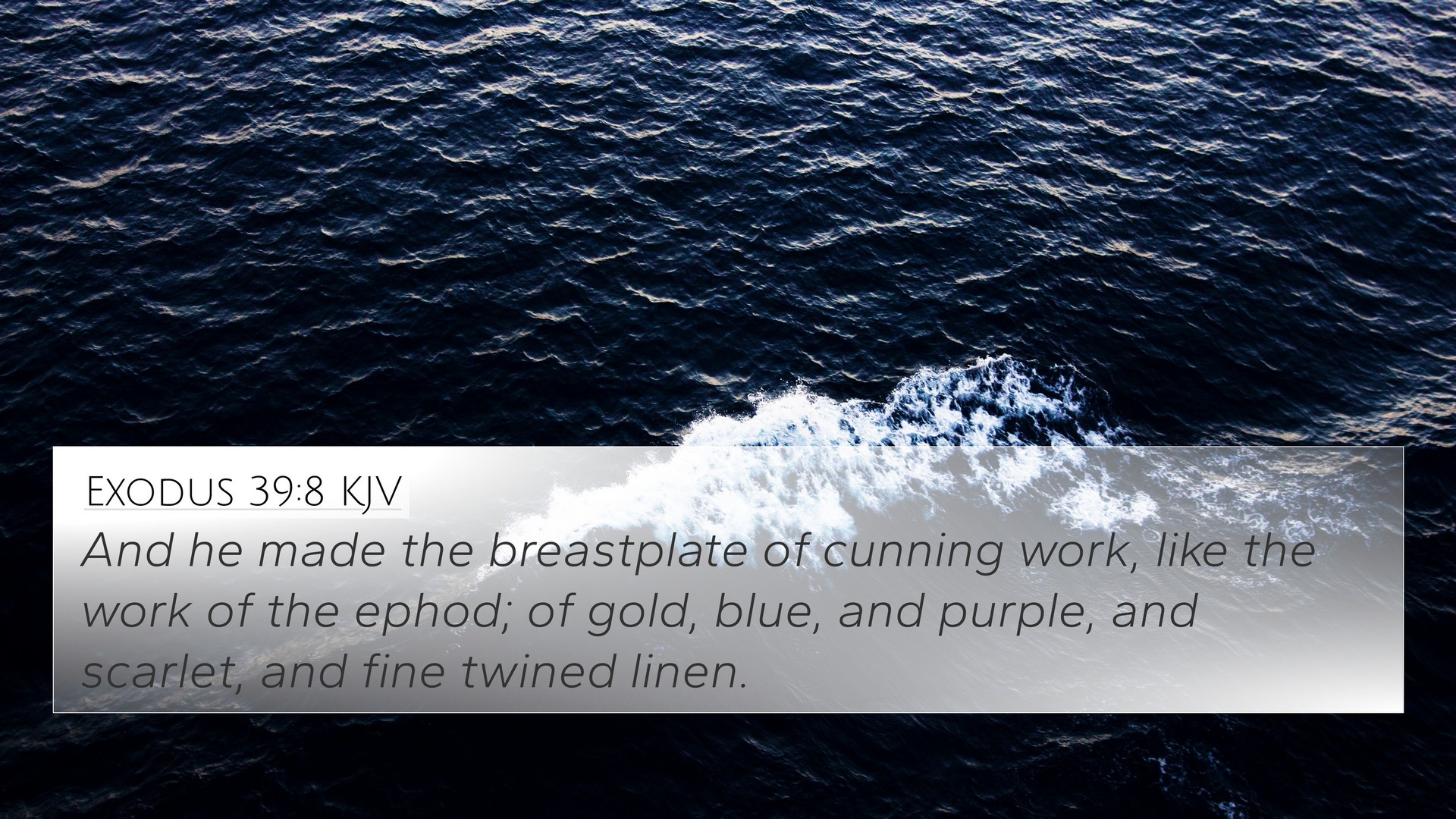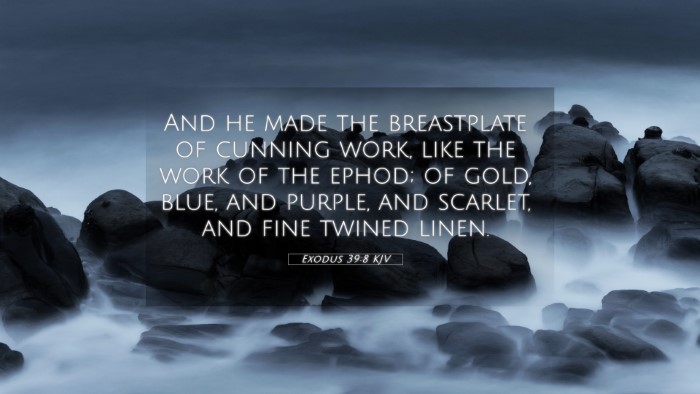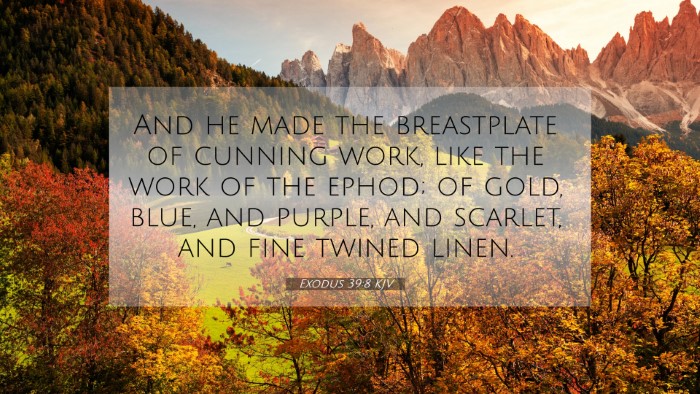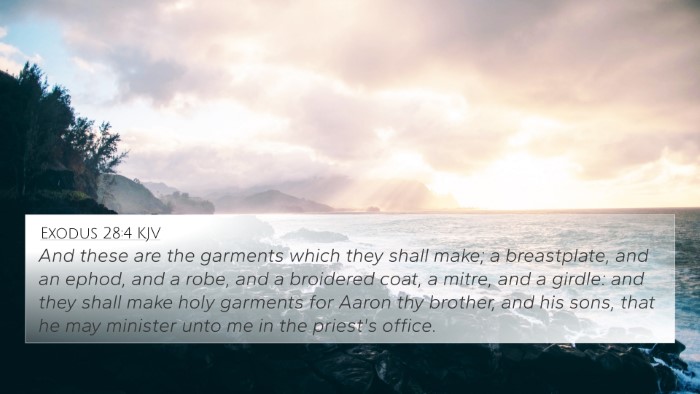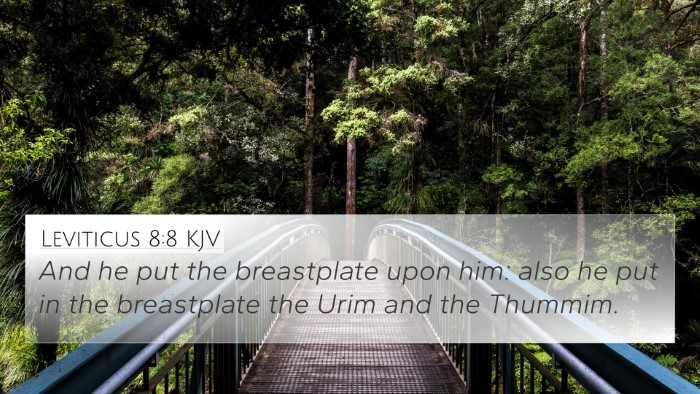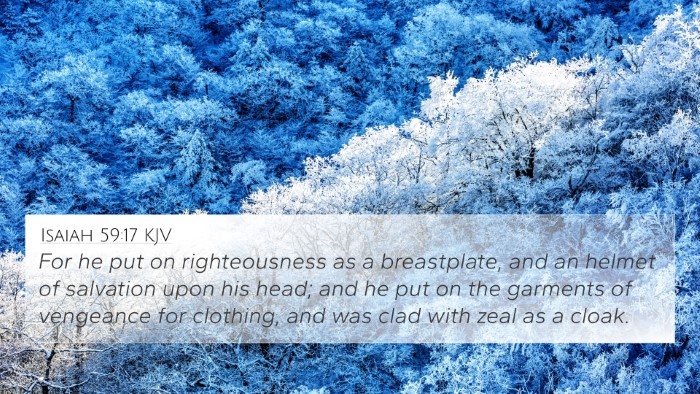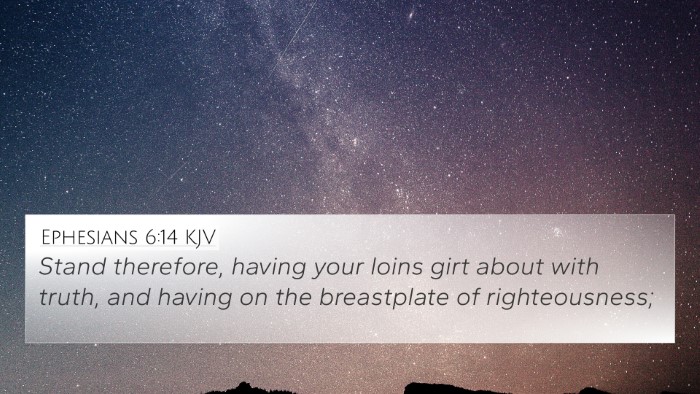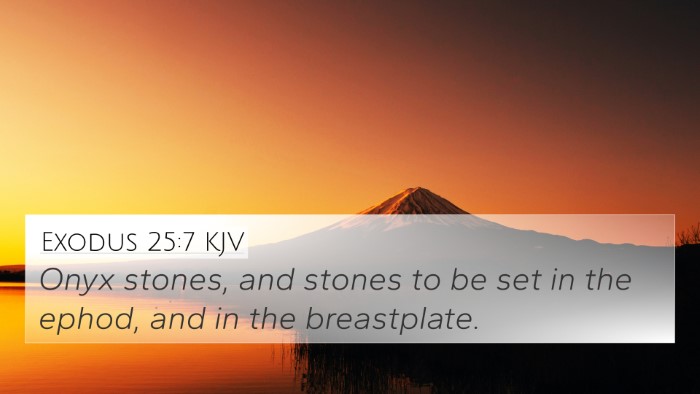Understanding Exodus 39:8
Exodus 39:8 states: "And he made the breastplate of cunning work, like the work of the Ephod; of gold, blue, and purple, and scarlet, and fine twined linen."
Context and Overview
The verse describes the creation of the breastplate worn by the high priest, a significant element of the priestly garments as laid out in instructions given by God to Moses. This breastplate was not merely ornamental but served several spiritual and liturgical purposes, bridging the connection between the people of Israel and God, ensuring representation before the divine.
Commentary Insights
Matthew Henry's Commentary
Matthew Henry emphasizes the meticulous craftsmanship involved in creating the breastplate, highlighting how its intricate design reflects not only the artistry bestowed by God but also the importance of holiness in worship. The combination of rich colors represents the beauty and majesty of God. The breastplate signifies the priest's role as a mediator between God and the Israelites, carrying the names of the tribes on his heart for remembrance before the Lord.
Albert Barnes' Commentary
Albert Barnes notes that the breastplate bears a direct resemblance to the ephod, suggesting that both garments serve complementary functions within the high priest's attire. He draws attention to the symbolic meanings of the colors: gold representing divinity, blue signifying heaven, purple depicting royalty, and scarlet indicating sacrifice. These elements accentuate the all-encompassing nature of God's presence and authority over the nation of Israel.
Adam Clarke's Commentary
Adam Clarke highlights the significance of the breastplate as a divine ordinance, constructed according to God’s specific instructions, which underline the theme of obedience and holiness in worship. He underscores that the breastplate contained the Urim and Thummim, which were used to discern God’s will, emphasizing the direct communication between God and the high priest. The intricate details of the breastplate reflect the care and honor with which God’s commands should be observed.
Cross-References
Exodus 39:8 can be linked to several other scriptures, enriching its understanding through thematic connections:
- Exodus 28:15-30: Discusses the details of the breastplate and its purposes.
- Leviticus 8:8: Mentions the breastplate as a part of the high priest's garments during the consecration.
- 1 Samuel 28:6: Refers to the Urim and Thummim used by the high priest to seek God's guidance.
- Hebrews 5:1: Talks about the role of the high priest, akin to Jesus Christ’s mediatorial work.
- Matthew 27:51: Illustrates the significance of the priestly role post-Crucifixion where the veil in the temple was torn.
- Romans 5:1-2: Describes how believers are justified and have access to God, paralleling the high priest's role.
- Revelation 1:6: Indicates that all believers are made kings and priests, extending the high priest's work to the Church.
Thematic Connections
The themes reflected in Exodus 39:8 resonate throughout scripture, particularly in discussions about:
- The Mediatorial Role: Just as the high priest mediated for Israel, Christ mediates for believers.
- Divine Presence: The colorful garments signify God's presence, much like the Holy Spirit in the New Testament.
- Holiness and Worship: The precision in crafting the breastplate points to the importance of holiness in approaching God.
Final Thoughts
Exodus 39:8 serves as a pivotal verse that encapsulates the careful preparation for worship under the Law. Understanding its implications through cross-references and thematic connections offers deeper insights into the continuity of God's relationship with His people, from the Old Testament to the New Testament. This inter-Biblical dialogue enriches the believer’s knowledge of God’s unchanging nature and His plan for redemption expressed in Christ. Through tools for Bible cross-referencing, readers can uncover the vast interconnectedness of scriptural texts that illuminate the complexities of faith and worship.
